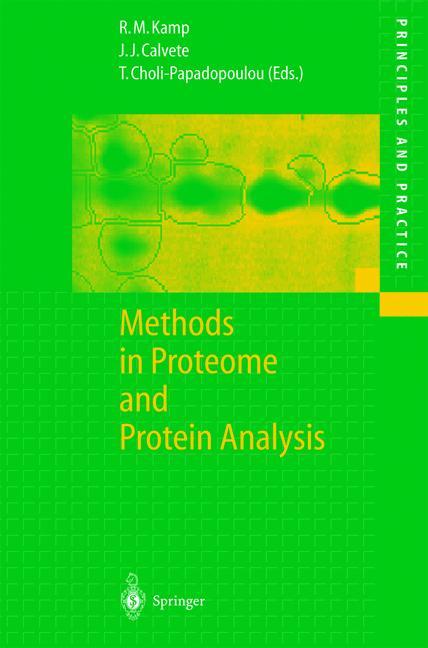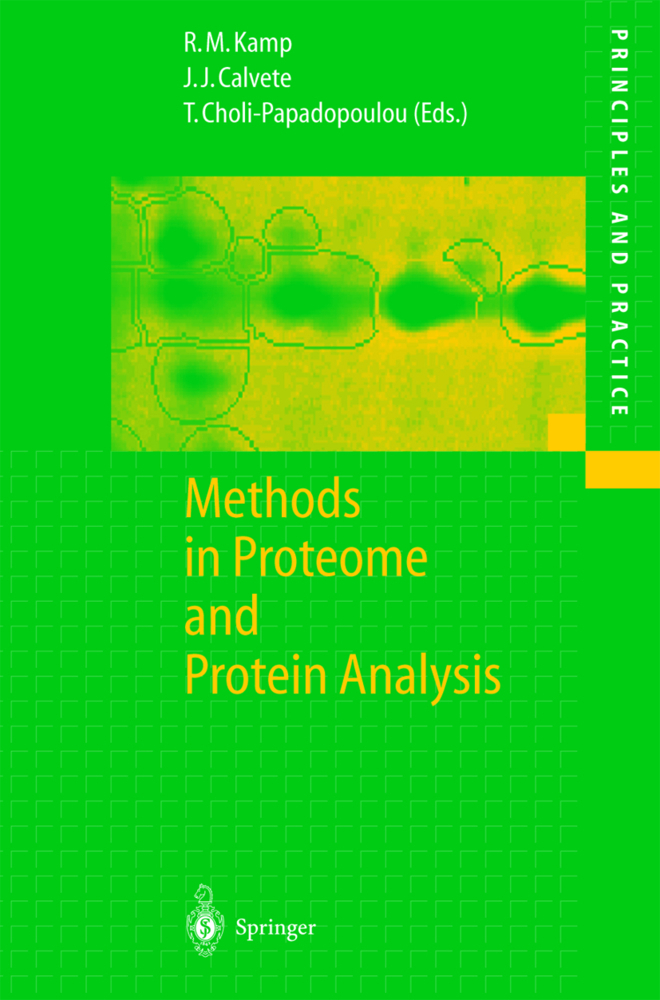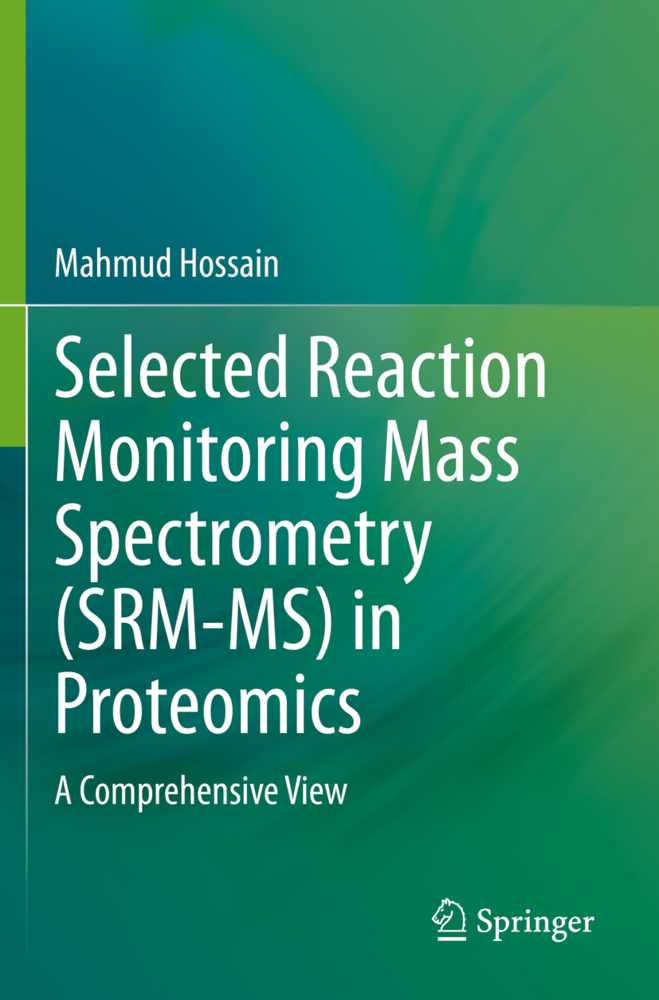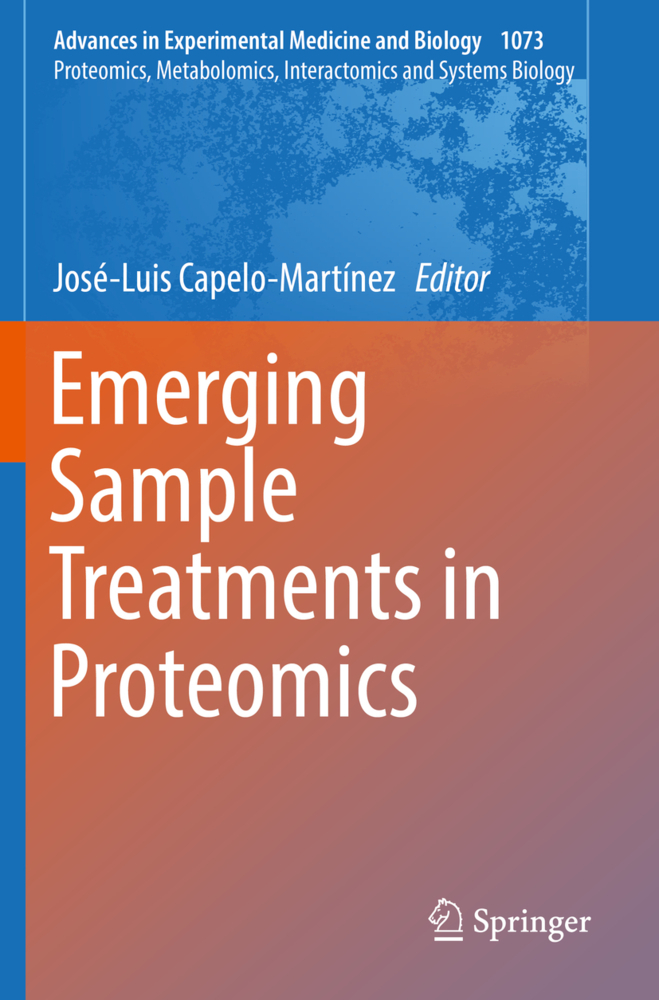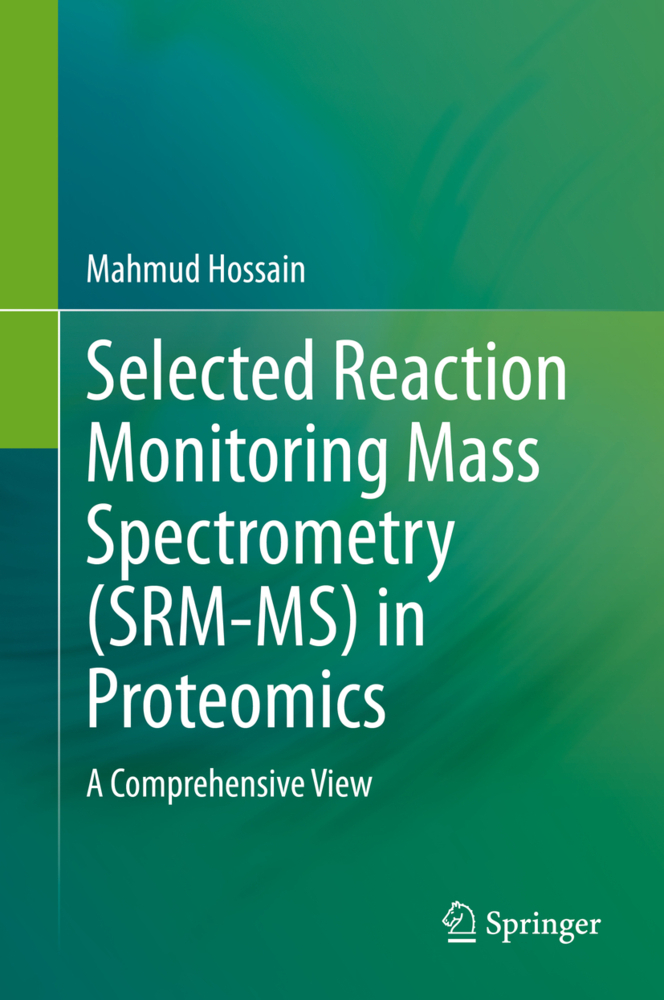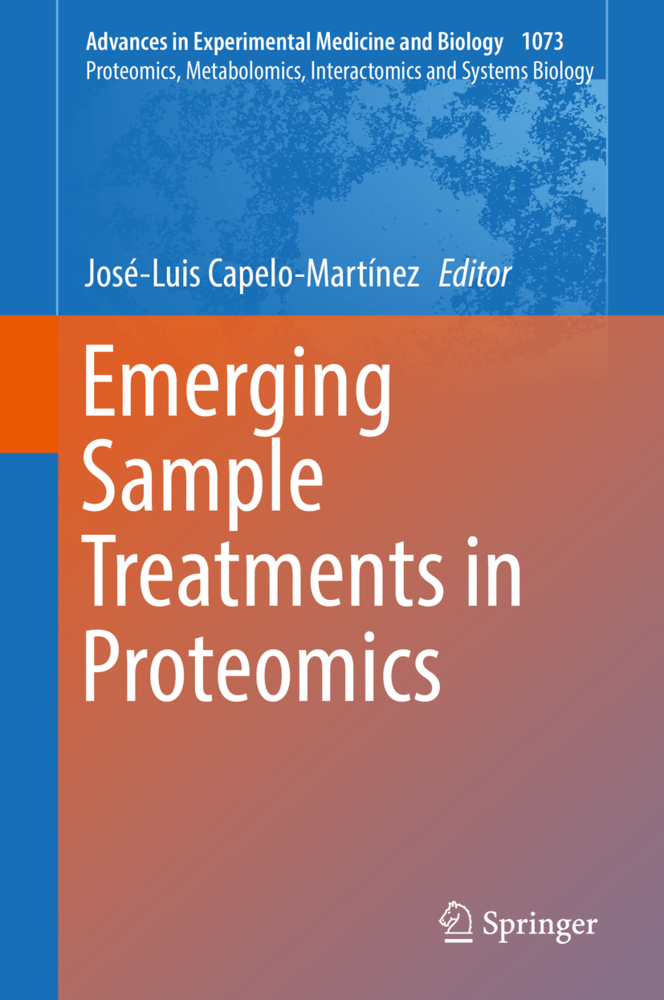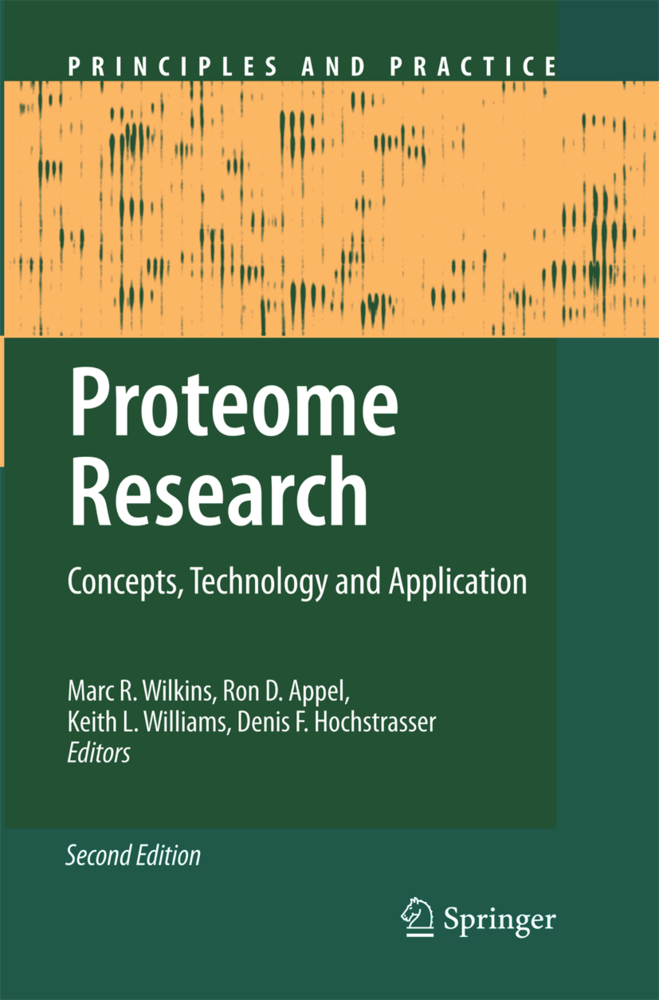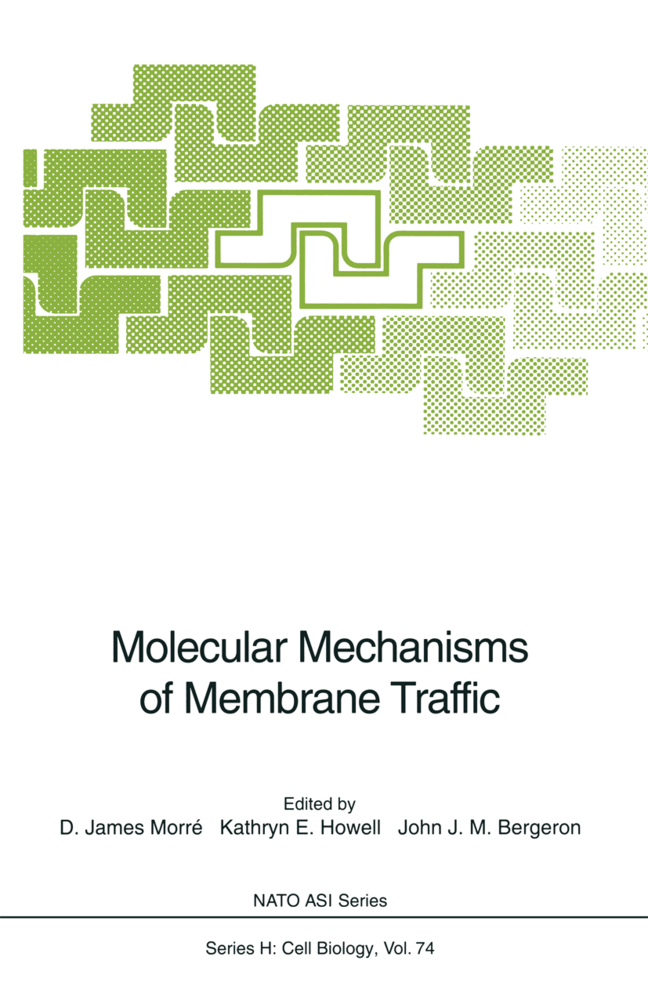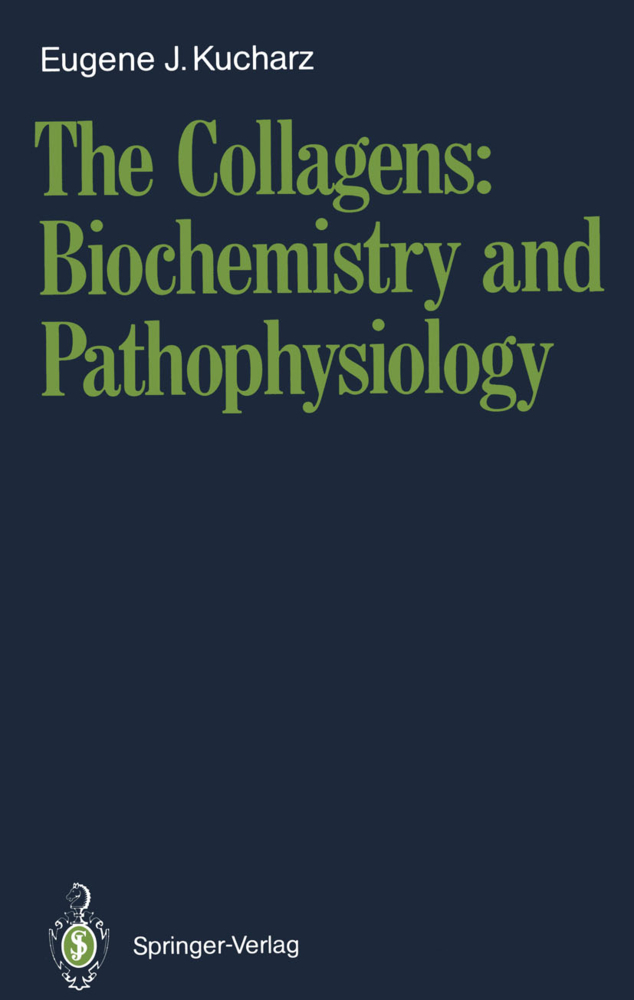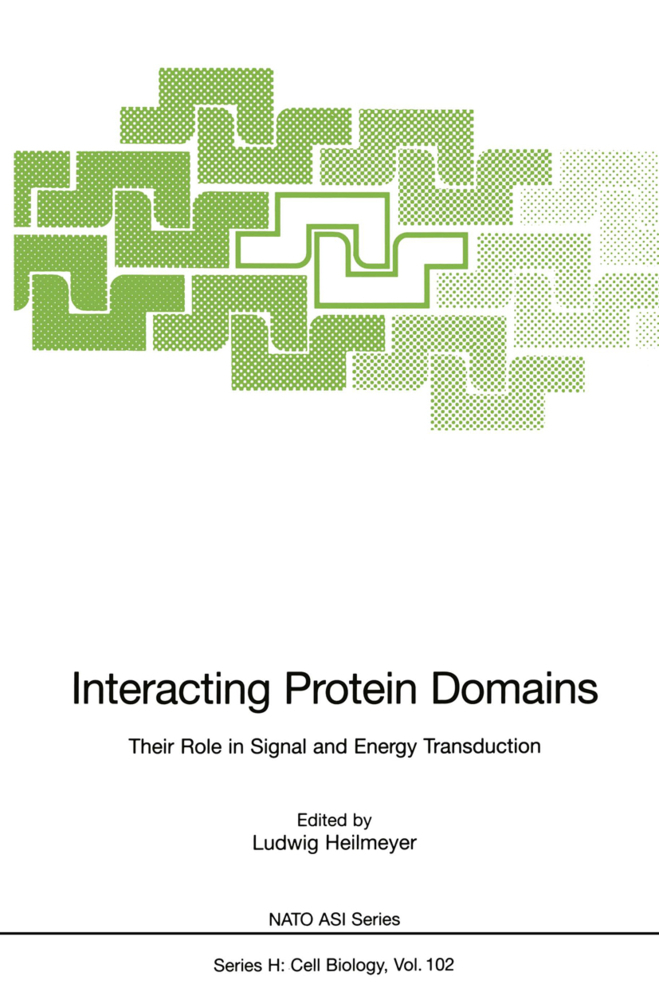Proteome and Protein Analysis
Proteome and Protein Analysis
Selected papers presented at the MPSA 98 are covering new, sensitive and rapid methods for the analysis of proteins, with special emphasis on the total cell proteins, the proteome. In addition to the experimental details, the advantages and limitations of the methodological approaches are discussed.
Topics included are: Protein sequencing analysis, protein and peptide sample preparation, mass spectrometry, NMR, analysis of post-translational modifications, purification of recombinant proteins, protein-protein and protein-DNA interactions, structure prediction, modeling and protein folding, functional implications of protein domains and newly emerging methods for the investigation of the proteome, allowing to analyse the expression of genes
2 Protein Sequencing or Genome Sequencing. Where Does Mass Spectrometry Fit into the Picture?
3 Reversible Negative Staining of Protein on Electrophoresis Gels by Imidazole-Zinc Salts: Micropreparative Applications to Proteome Analysis by Mass Spectrometry
4 Direct Analysis of Protein Complexes
5 De novo Sequencing of Proteins With Mass Spectrometry Using the Differential Scanning Technique
6 Characterization Of Gel Separated Proteins
II Structure Analysis
7 Protein Structure and Dynamics by NMR in Solution
8 Elucidation of Functionally Significant Structural Modifications by Matrix-Assisted Laser Deorption/Ionization Time-of-Flight Mass Spectrometry with Post-Source Decay Analysis
9 Detection of Specific Zinc Finger Peptide Complexes with Matrix-Assisted Laser Desorption/Ionization Mass Spectrometry
10 Epitode Mapping for the Monoclonal Antibody that Inhibits Intramolecular Flavin to Heme Electron Transfer in Flavocytochrome B2 from Baker's Yeast (L-Lactate Dehydrogenase)
11 A MALDI-TOF Mass Spectrometry Approach to Investigate the Defense Reactions in Drosophila Melanogaster, an Insect Model for the Study of Innate Immunity
12 A New Method for the Isolation of the C-Terminal Peptide of Proteins by the Combination of Selective Blocking of Proteolytic Peptides and Cation Exchange Chromatography
13 The Folding Pathway of Disulfide Containing Proteins
14 Cavity Supported HPLC of cis/trans Isomers of Proline Containing Peptides Using Cyclodextrins and Calixarenes
15 The Perception of Hydrophobic Clusters in the Native and Partially Unfolded States of a Protein
16 Structure, Dynamics and Function of the Proton Pump Bacteriorhodopsin
17 StructuralCharacterization of Porcine Seminal Plasma Psp-I/Psp-li, A Paradigm Spermadhesin
18 Expression and Characterization of Saposin-Like-Proteins
III Protein-Protein and Protein-DNA Interaction
19 A Structural Model for the P53 Complex with DNA Response Elements: Implications for P53 Function and Future Research Directions
20 Overproduction, Purification and Structural Studies on the Zn Containing S14 Ribosomal Protein from Thermus thermophilus
21 Bimolecular Interaction of Matrix Metalloproteinases and Their Inhibitors TIMPs
IV Posttranslational Modifications
22 Enzymatic and Chemical Deblocking of N-Terminally Modified Proteins
23 Exploring Functions of Glycosylation in Host Defence Using Novel Oligosaccharide Sequencing Technology
24 Proteoglycans: Biological Roles and Strategies for Isolation and Determination of their Glycan Constituents.
Topics included are: Protein sequencing analysis, protein and peptide sample preparation, mass spectrometry, NMR, analysis of post-translational modifications, purification of recombinant proteins, protein-protein and protein-DNA interactions, structure prediction, modeling and protein folding, functional implications of protein domains and newly emerging methods for the investigation of the proteome, allowing to analyse the expression of genes
I Proteomics and Mass Spectrometry
1 Strategies and Methods for Proteome Analysis2 Protein Sequencing or Genome Sequencing. Where Does Mass Spectrometry Fit into the Picture?
3 Reversible Negative Staining of Protein on Electrophoresis Gels by Imidazole-Zinc Salts: Micropreparative Applications to Proteome Analysis by Mass Spectrometry
4 Direct Analysis of Protein Complexes
5 De novo Sequencing of Proteins With Mass Spectrometry Using the Differential Scanning Technique
6 Characterization Of Gel Separated Proteins
II Structure Analysis
7 Protein Structure and Dynamics by NMR in Solution
8 Elucidation of Functionally Significant Structural Modifications by Matrix-Assisted Laser Deorption/Ionization Time-of-Flight Mass Spectrometry with Post-Source Decay Analysis
9 Detection of Specific Zinc Finger Peptide Complexes with Matrix-Assisted Laser Desorption/Ionization Mass Spectrometry
10 Epitode Mapping for the Monoclonal Antibody that Inhibits Intramolecular Flavin to Heme Electron Transfer in Flavocytochrome B2 from Baker's Yeast (L-Lactate Dehydrogenase)
11 A MALDI-TOF Mass Spectrometry Approach to Investigate the Defense Reactions in Drosophila Melanogaster, an Insect Model for the Study of Innate Immunity
12 A New Method for the Isolation of the C-Terminal Peptide of Proteins by the Combination of Selective Blocking of Proteolytic Peptides and Cation Exchange Chromatography
13 The Folding Pathway of Disulfide Containing Proteins
14 Cavity Supported HPLC of cis/trans Isomers of Proline Containing Peptides Using Cyclodextrins and Calixarenes
15 The Perception of Hydrophobic Clusters in the Native and Partially Unfolded States of a Protein
16 Structure, Dynamics and Function of the Proton Pump Bacteriorhodopsin
17 StructuralCharacterization of Porcine Seminal Plasma Psp-I/Psp-li, A Paradigm Spermadhesin
18 Expression and Characterization of Saposin-Like-Proteins
III Protein-Protein and Protein-DNA Interaction
19 A Structural Model for the P53 Complex with DNA Response Elements: Implications for P53 Function and Future Research Directions
20 Overproduction, Purification and Structural Studies on the Zn Containing S14 Ribosomal Protein from Thermus thermophilus
21 Bimolecular Interaction of Matrix Metalloproteinases and Their Inhibitors TIMPs
IV Posttranslational Modifications
22 Enzymatic and Chemical Deblocking of N-Terminally Modified Proteins
23 Exploring Functions of Glycosylation in Host Defence Using Novel Oligosaccharide Sequencing Technology
24 Proteoglycans: Biological Roles and Strategies for Isolation and Determination of their Glycan Constituents.
Kamp, R.M.
Kyriakidis, D.
Choli-Papadopoulou, T.
| ISBN | 978-3-642-64060-5 |
|---|---|
| Artikelnummer | 9783642640605 |
| Medientyp | Buch |
| Auflage | Softcover reprint of the original 1st ed. 2000 |
| Copyrightjahr | 2012 |
| Verlag | Springer, Berlin |
| Umfang | XI, 372 Seiten |
| Abbildungen | XI, 372 p. |
| Sprache | Englisch |

